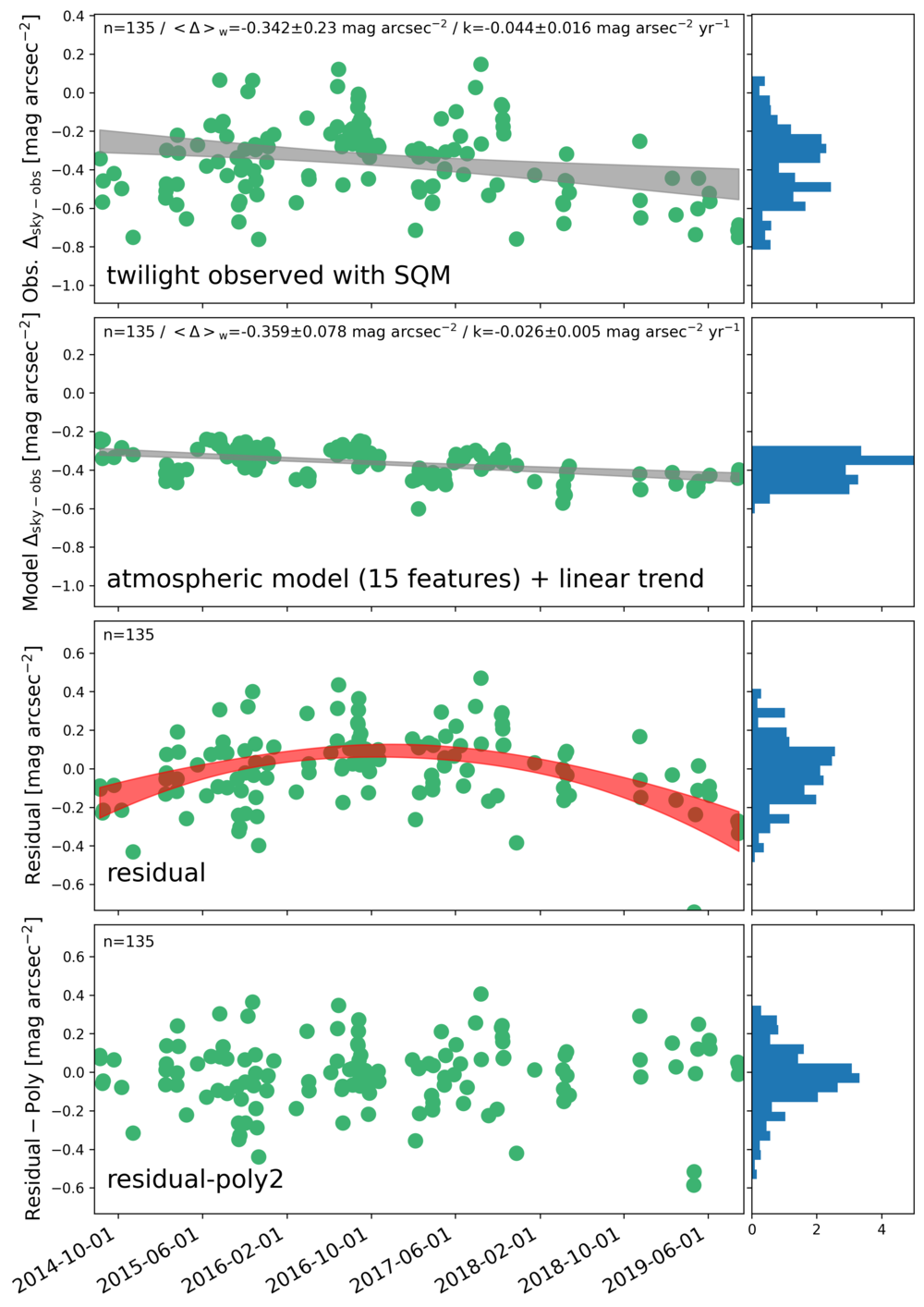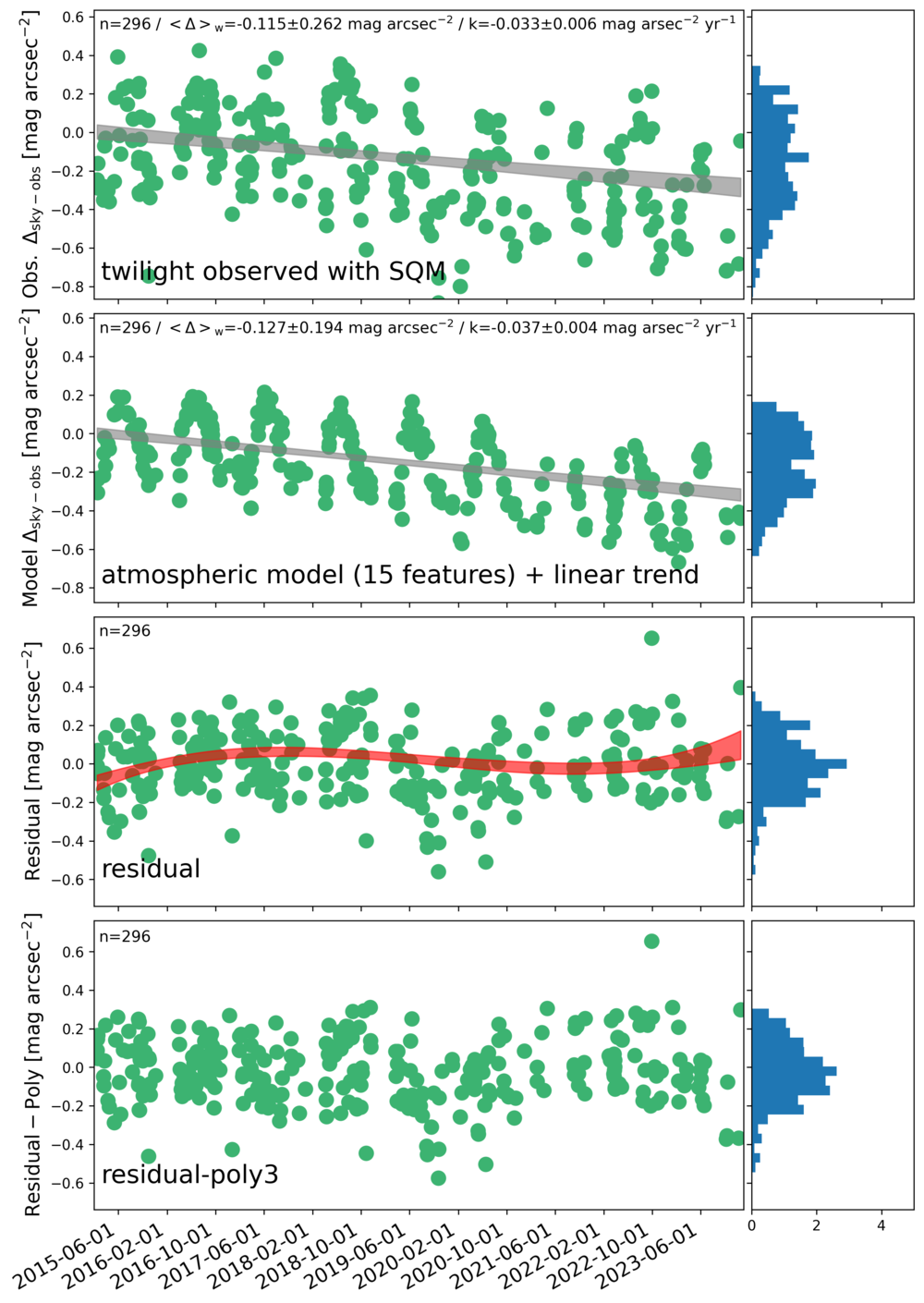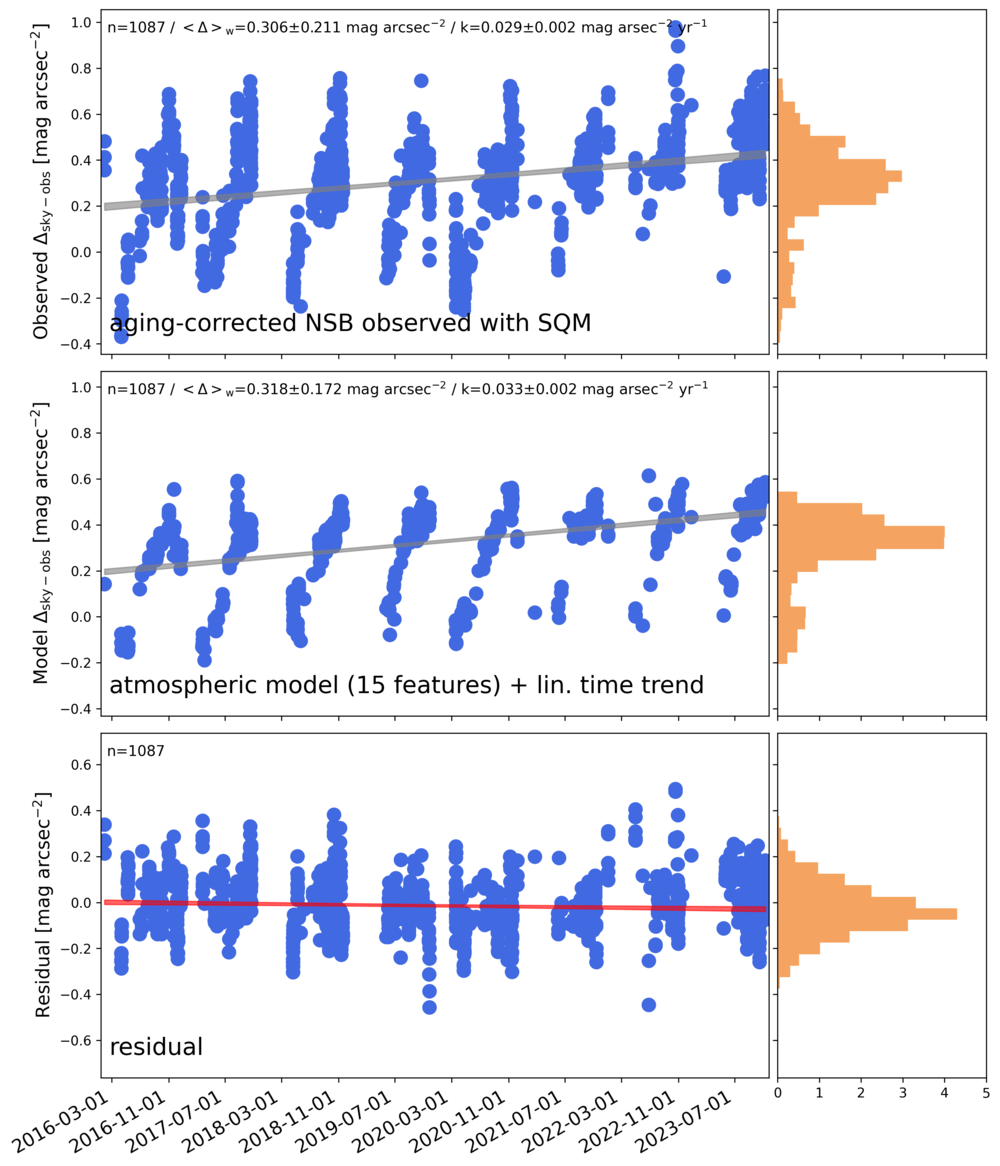In order to assess long-term changes of the night sky brightness (NSB), we first select from the raw data 45-minute-slices within which we calculate the average NSB under clear, moonless conditions.
Second, we match our data (in location and time) with a large number of meteorological parameters (including albedo, snow cover, aerosols, particulate matter, ozone etc.) and
estimate the impact of atmospheric changes on our NSB measurements using a simple model. This allows us to remove any bias that may occur due to change in atmospheric conditions
rather than anthropogenic contribution.
Finally, we use the twilight as a post-calibration source to correct for any temporal changes of the detector sensitivity (e.g. due to change of transmission of the SQM housing window).
The aging correction is thus a polynomial (up to 3rd order) that we obtain from unbiased clear-sky twilight observations as a function of time.
The raw data is then corrected for the aging effect.
A detailed explanation of the applied analysis technique is found in [Puschnig et al. 2023].
The long-term trend plots (and the aging plots) are found below.
















































Scientific data analysis by Quellcode 360 GmbH